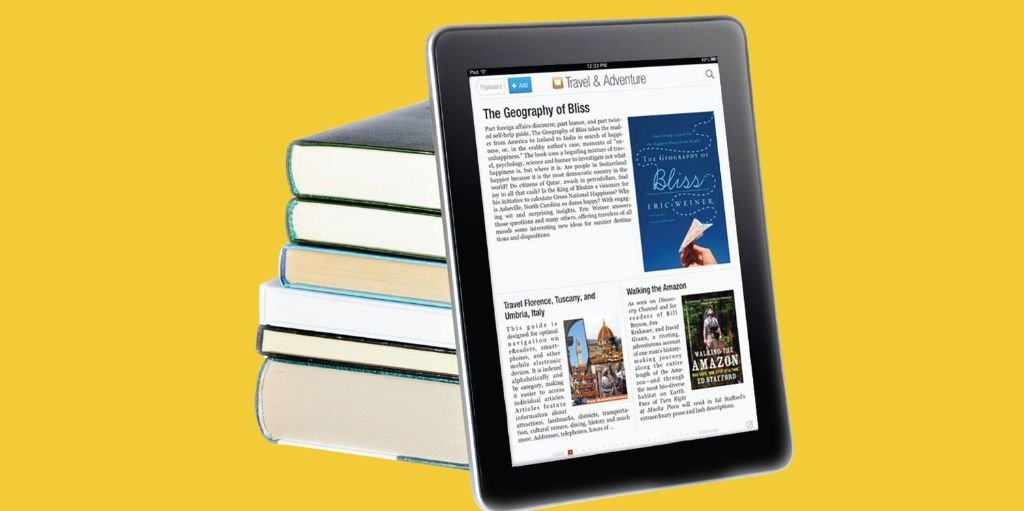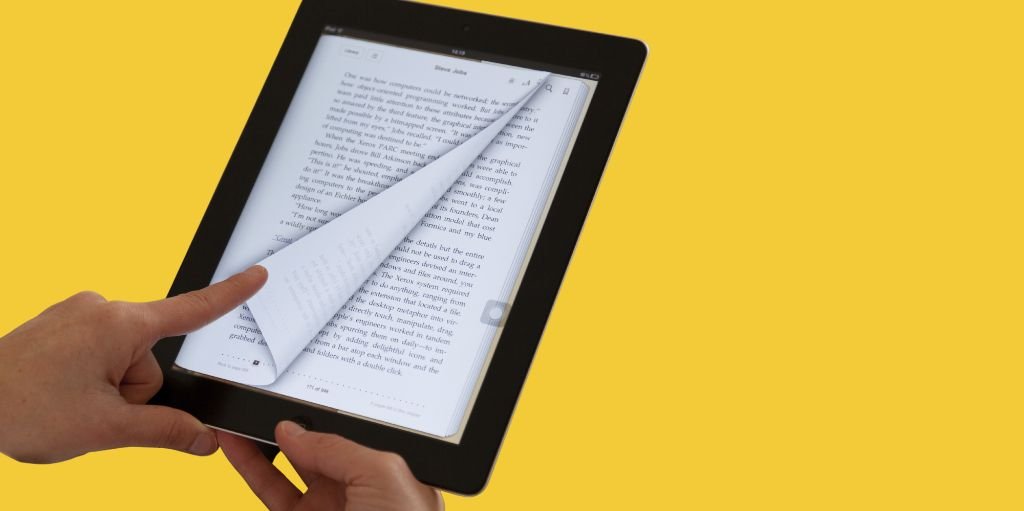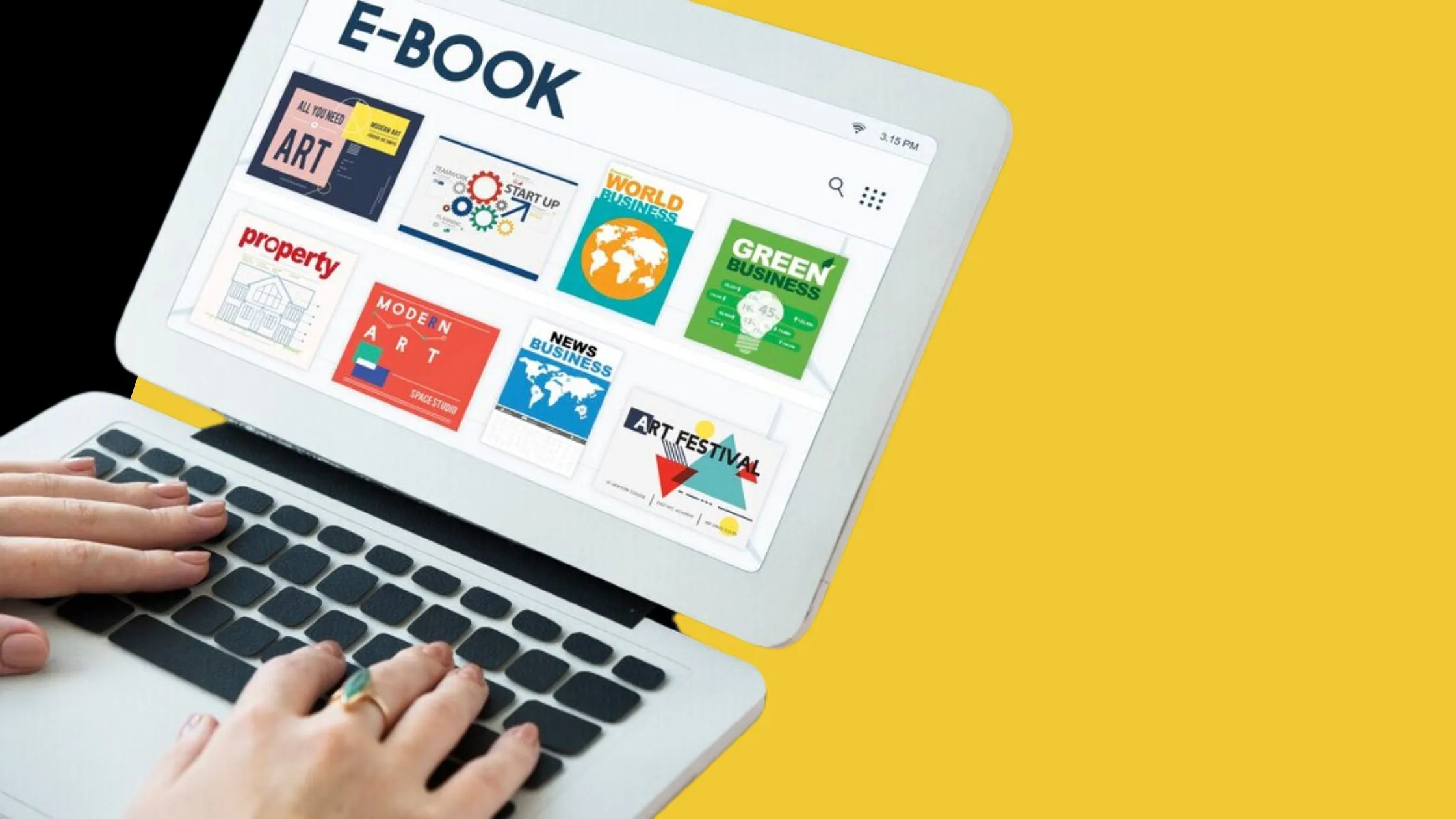Concerning ebooks, there are several different types to choose from. Understanding the differences between these various formats can help you select the best option for your reading preferences. In this comprehensive guide, we will explore the various types of ebooks available in the digital market and provide insights into their unique features and functionalities.
Key Takeaways
- eBooks are digital books that can be read on electronic devices such as e-readers, tablets, and smartphones.
- PDF eBooks are widely compatible and maintain the layout and formatting of the original document, making them a popular choice for documents with complex designs.
- EPUB eBooks are a common format for eBooks as they are adaptable to different screen sizes and can adjust text based on the reader's preferences.
- MOBI eBooks are mainly used for Amazon Kindle devices and support features like annotations and bookmarks.
- Audiobooks provide an audio version of a book, allowing users to listen to the content instead of reading it, which is beneficial for multi-tasking or visually impaired individuals.
Types of eBooks
Some of the various types of eBooks available in the market cater to different genres and preferences of readers. With the rise in popularity of eBooks, it is imperative to understand the different formats and categories they come in. For more details on eBook file formats, you can refer to the List of 10 Best eBook File Formats for 2024 – PGBS.
| Fiction eBooks | Non-Fiction eBooks |
| Romance | Biographies |
| Mystery | Self-Help |
| Science Fiction | History |
| Fantasy | Business |
| Horror | Education |
Fiction eBooks
Clearly, fiction eBooks encompass a wide range of genres, including romance, mystery, science fiction, fantasy, and horror. These eBooks are crafted to entertain and transport readers to imaginary worlds, engaging them in captivating stories and characters.
Non-Fiction eBooks
With a focus on real-life events, facts, and information, non-fiction eBooks cover a variety of subjects such as biographies, self-help, history, business, and education. It provides readers with valuable knowledge, insights, and ideas to enhance their personal and professional lives.
It is imperative for readers to explore the diverse world of eBooks to find genres that resonate with their interests and preferences. Whether you enjoy escaping into fictional realms or expanding your knowledge with non-fiction reads, there is an eBook for every reader in today’s digital age.
Factors to Consider When Choosing an eBook Type

Despite the plethora of eBook types available, it’s important to consider various factors before selecting the most suitable format for your publication. By understanding your audience, genre, and publication goals, you can make an informed decision that aligns with your overall objectives.
Audience and Genre
Any successful eBook publication begins with a clear understanding of your target audience and genre. Consider the demographics, preferences, and reading habits of your readers to determine the most suitable eBook type. For example, image-heavy content may be better suited for a fixed-layout eBook, while text-heavy novels may work well in reflowable formats.
This approach ensures that your eBook not only resonates with your readers but also enhances their reading experience, ultimately leading to better engagement and satisfaction.
Publication Goals
Any successful eBook publication begins with a clear understanding of your genre and target audience. Consider your publication goals when selecting an eBook type. Different formats cater to specific objectives, such as enhanced interactivity, multimedia integration, or compatibility across various devices. By aligning your publication goals with the capabilities of different eBook types, you can choose the format that best serves your purpose.
Goals may vary from increasing reader engagement through multimedia elements to maximizing distribution by ensuring compatibility with a wide range of devices and platforms. Additionally, consider factors such as budget, timeline, and technical expertise when selecting the most suitable eBook type for your publication.
Step-by-Step Guide to Creating Different eBook Types
Now, let’s explore the step-by-step process of creating different types of ebooks. Understanding the history of ebook production can offer valuable insights into the best practices used today. For example, early ebooks faced challenges with formatting and accessibility. Modern tools and techniques have addressed these issues, making it easier than ever to create professional-looking ebooks. Whether you’re working on a fiction novel, a how-to guide, or a collection of essays, these tips will help you navigate the world of ebook creation with ease.
Writing and Editing Process
eBook writing and editing process is crucial for creating a high-quality ebook. It involves various stages such as planning, drafting, revising, and proofreading. Before you begin writing, it’s necessary to outline your content and structure. Once you have a solid outline, start drafting your ebook by focusing on one chapter at a time. After completing the draft, revise it for clarity, coherence, and consistency. Lastly, proofread your ebook to catch any grammatical errors or typos.
Design and Formatting
On the design and formatting front, it’s important to pay attention to the visual elements of your ebook. This includes choosing the right font, spacing, and layout to enhance readability. Make sure to incorporate images, graphics, and charts where necessary to break up the text and make the content more engaging for readers. With a well-designed and formatted ebook, you can create a visually appealing reading experience that will keep readers engaged from start to finish.
Tips for eBook Writers and Publishers
Not all eBooks are created equal. To stand out in a crowded digital market, eBook writers and publishers need to incorporate specific strategies that can help elevate their content. From developing engaging material to implementing effective marketing techniques, there are key considerations to keep in mind for success in the eBook industry.
Developing Engaging Content
Even the most well-written eBook will struggle to find an audience if it doesn’t engage readers from the start. To capture and maintain interest, writers and publishers should focus on creating content that is not only informative but also captivating. This can be achieved through compelling storytelling, interactive elements, and visually appealing design. Additionally, incorporating multimedia elements such as videos, images, and links can enhance the overall reading experience for users.
Marketing Strategies for Different eBook Types
Even after creating engaging content, eBook writers and publishers must strategize how to effectively market their work to reach the right audience. Marketing tactics will vary depending on the type of eBook being promoted, whether it’s fiction, non-fiction, educational, or promotional material. This is where understanding the target demographic and tailoring the marketing approach accordingly becomes crucial for success.
| Marketing Strategies | Description |
|---|---|
| Social Media | Utilize platforms like Facebook, Instagram, and Twitter to create buzz and generate interest. |
| Email Marketing | Build a subscriber list and send targeted campaigns to promote eBook releases and offers |
| Collaborations | Partner with influencers or other authors to expand reach and credibility in the industry. |
| SEO Strategies | Optimize keywords and metadata to improve visibility and searchability on digital platforms. |
| Paid Advertising | Invest in targeted ads on platforms like Google AdWords or Amazon to reach specific audiences. |
This table outlines some key marketing strategies that can be effective for promoting eBooks across different genres and target audiences. By implementing a combination of these tactics, eBook writers and publishers can enhance their visibility and attract more readers to their digital content.
Exploring eBook Platforms

Self-Publishing Platforms
To begin your publishing journey, consider exploring various self-publishing platforms that can help bring your book to a global audience. Any aspiring author can utilize platforms such as Amazon Kindle Direct Publishing, Kobo Writing Life, and Smashwords. These platforms provide easy-to-use tools for uploading your manuscript, designing your book cover, and setting the price of your eBook.
Traditional eBook Distribution Channels
Platforms like Apple Books, Barnes & Noble, and Google Play Books are key players in traditional eBook distribution channels. They serve as gateways for authors to reach a wide range of readers and offer competitive royalty rates. A combination of these platforms can help maximize your eBook’s visibility and potential sales.
Traditional eBook Distribution Channels
Unlike traditional printed books, eBooks come in various types with their own set of pros and cons. When considering what type of eBook to publish, it’s important to understand the advantages and disadvantages associated with each format. To explore deeper into the topic, you can learn more about the 7 Types of eBooks You Can Write & Launch Fast! #BSI 31. Here is a breakdown of the pros and cons of different eBook types:
| Format | Pros | Cons |
|---|---|---|
| Retains original formatting, widely compatible | Not always optimized for smaller screens, larger file size | |
| EPUB | Reflows text for different screen sizes, interactive features | Limited support for complex layouts, may not preserve design elements |
| MOBI | Ideal for Kindle devices, supports dynamic content | Limited compatibility outside of Amazon ecosystem, formatting challenges |
| AZW | DRM protection, optimized for Kindle devices | Limited distribution options, proprietary format |
| HTML | Highly customizable, interactive elements | Requires more technical skills, compatibility issues |
| iBooks | Seamless Apple device integration. | Apple-only platform. |
Assessing Market Demand for Each Genre
Demand for different eBook genres can vary significantly based on current trends, reader preferences, and market saturation. Conduct thorough research to understand the target audience for each genre and assess how competitive the market is. By identifying popular genres with high demand and less competition, you can position your eBook for greater success.
Analyzing Profitability and Expenses
When analyzing the profitability of different eBook types, consider factors such as production costs, marketing expenses, and potential revenue streams. Some formats may require more resources to produce but offer a higher profit margin in the long run. Evaluate your budget and resources to determine which eBook types align with your financial goals and business objectives.
Analyzing the profitability of each eBook type is crucial to making informed decisions about your publishing strategy. By carefully weighing the potential expenses and revenue opportunities associated with each format, you can maximize your chances of success in the competitive eBook market.
Ebook Formats
Different ebook formats offer unique features and compatibilities. Each has its own advantages and may be preferred based on the device and software one intends to use.
EPUB
EPUB stands for Electronic Publication. It is a widely supported file format for ebooks and is known for its reflowable content, which means the text can adjust to fit the screen size of different devices. EPUB files are compatible with a range of e-readers and software except for the Amazon Kindle.
PDF, or Portable Document Format, is a popular format for documents that need to retain their formatting and layout. It is not reflowable like EPUB, which can make it a less desirable choice for e-readers with smaller screens. PDFs are often used for documents like manuals, textbooks, and academic papers.
MOBI
MOBI is an older ebook format that was initially used by MobiPocket Reader before Amazon acquired it. Although still in use, it is mostly replaced by AZW on newer Kindle devices. MOBI files typically offer good compatibility with earlier Amazon Kindle models.
AZW
AZW is Amazon’s proprietary ebook format, built specifically for Kindle e-readers. AZW files are known for their DRM (Digital Rights Management) features, which can restrict the sharing of ebooks. They are compatible only with Kindle devices or Kindle reading software.
iBooks
iBooks is not a file format, but rather the name of Apple’s ebook platform and the formats it supports, which include EPUB and PDFs. iBooks formats often come with added interactive features that work only on Apple devices through the Apple Books app.
HTML
HTML, or HyperText Markup Language, is the basic language used to create web pages. It allows developers to structure content using tags to define elements like headings, paragraphs, links, and images. Unlike reflowable formats such as EPUB, which adapt to different screen sizes, HTML lays out content in a fixed structure that can vary based on style sheets and other external factors. It’s widely used for creating websites and web applications, serving as the core framework for presenting information on the internet. HTML is often complemented by CSS for styling and JavaScript for interactivity, making it a versatile tool for web development.
Ebook Devices
Ebook readers have a variety of devices at their disposal, each with unique features and optimal use cases. These devices include dedicated e-readers, tablets, smartphones, and computers.
E-Readers
E-readers are devices specifically designed for reading digital books. They typically feature E Ink technology, which mimics the appearance of paper and is gentle on the eyes. Examples of e-readers include the Amazon Kindle, Kobo Clara HD, and Barnes & Noble Nook. These devices often have a long battery life and can store thousands of ebooks.
Tablets
Tablets provide a versatile platform for reading ebooks as well as performing other functions like browsing the web and playing media. Notable tablets include the Apple iPad, Samsung Galaxy Tab, and Amazon Fire. Their color screens are suitable for interactive and graphic-rich ebooks. However, they may cause more eye strain and have shorter battery life compared to e-readers.
Smartphones
Smartphones have become a convenient way for people to read ebooks on-the-go. They allow users to access ebooks through apps like Kindle, Apple Books, and Google Play Books. The portability and multifunctionality of smartphones make them a popular choice, although the smaller screen size may not be ideal for extended reading sessions.
Computers
Computers, both desktops and laptops, are also used to read ebooks. They are effective for academic or professional purposes when readers may need to reference multiple sources or take notes. Software like Adobe Digital Editions and Calibre are popular for managing and reading ebooks on computers. Their large screens and powerful hardware can handle complex ebooks with extensive formatting.
Conclusion
Summing up, understanding the various types of ebooks available can help you make informed decisions when creating or purchasing digital content. Whether you prefer the traditional text-based ebooks, enhanced ebooks with multimedia elements, or interactive ebooks that engage readers through gamification, each type offers unique features to cater to different preferences and needs.
By exploring the different types of ebooks and their characteristics, you can choose the format that best suits your content and audience. Whether you are an author looking to publish your work or a reader eager to explore new digital content, having knowledge about the types of ebooks available can enhance your overall reading or publishing experience.
FAQ
A: There are several types of ebooks available, including PDF ebooks, ePub ebooks, MOBI ebooks, and interactive ebooks.
A: A PDF ebook is a digital book format that displays the same layout and design as the print version. It is widely compatible with various devices and can be easily shared.
A: An ePub ebook is a popular digital book format that is reflowable, meaning the text resizes to fit different screens. It is commonly used for fiction and non-fiction books.
A: A MOBI ebook is a format developed by Mobipocket, optimized for mobile devices. It is commonly used for fiction, children’s books, and personal development ebooks.
A: Interactive ebooks are ebooks that contain multimedia elements such as audio, video, and interactive features like quizzes or games. They provide an engaging reading experience.


